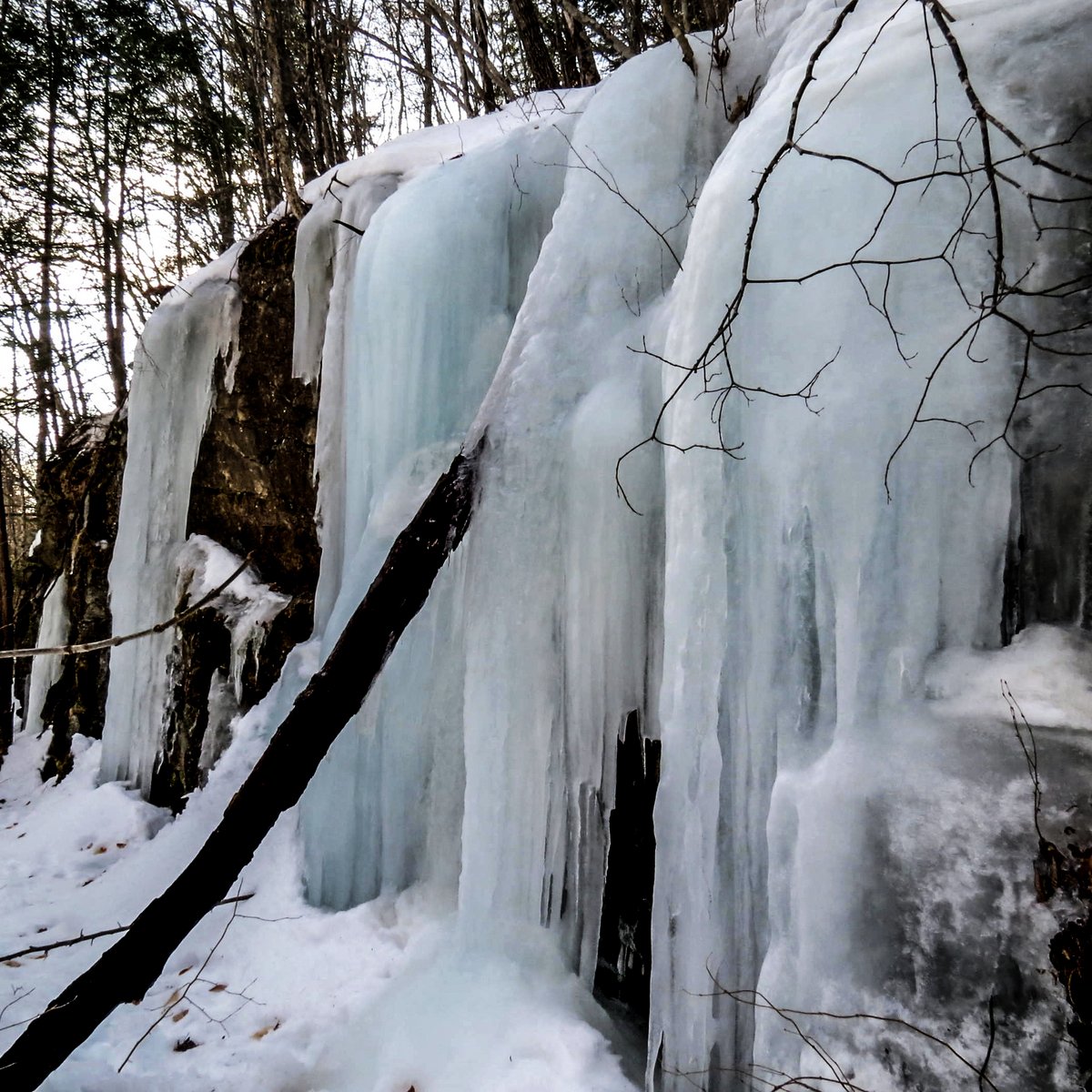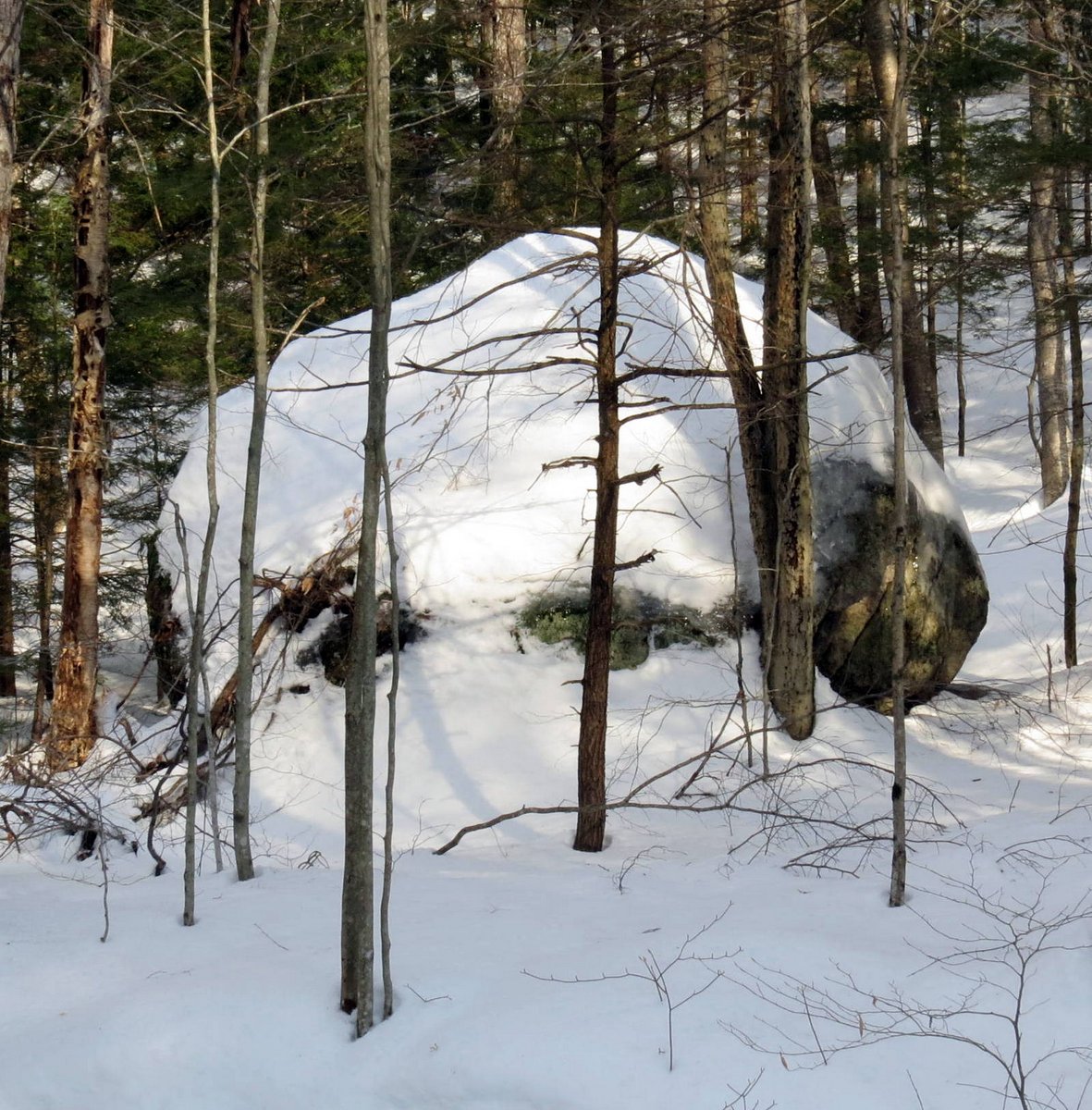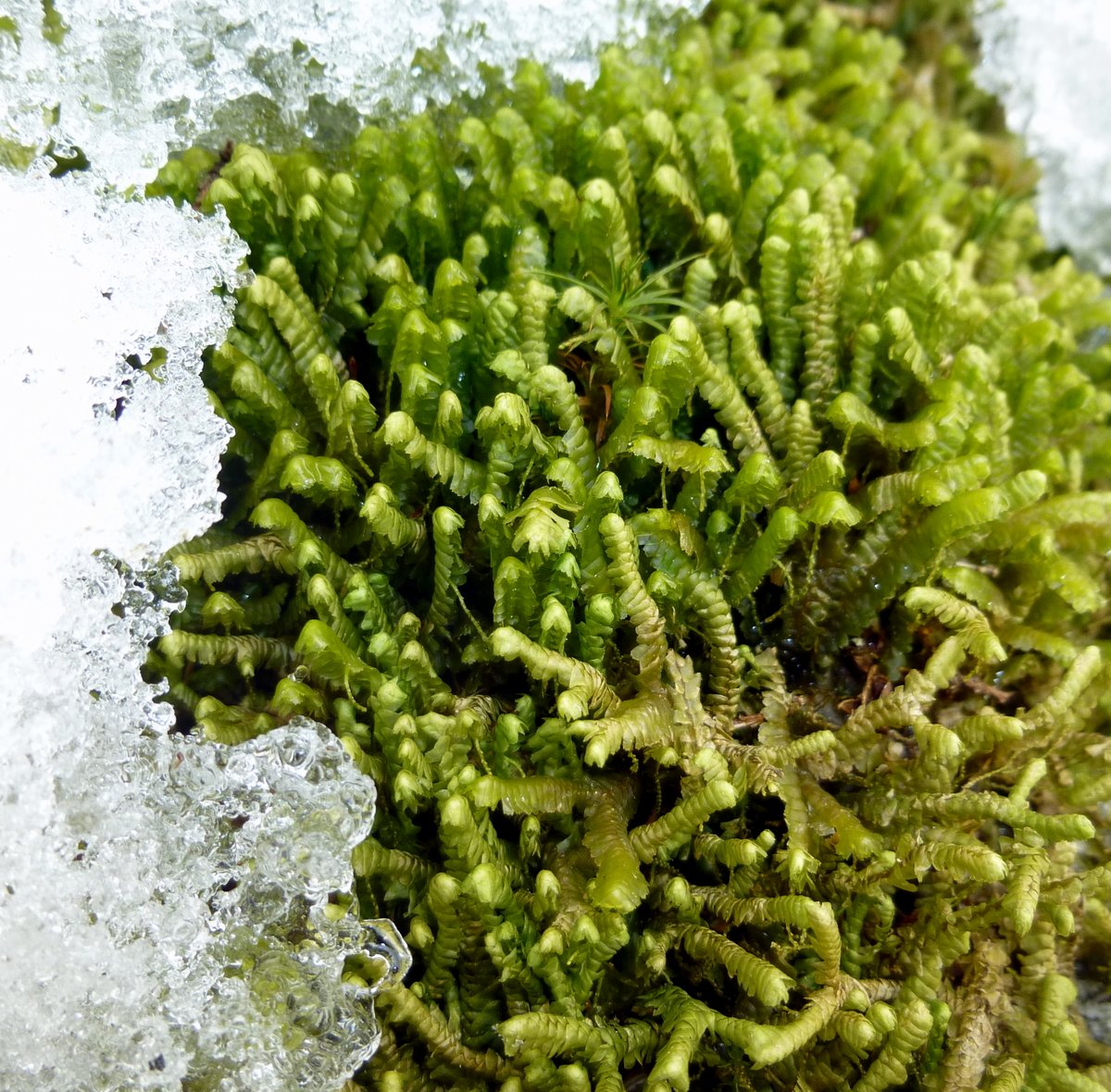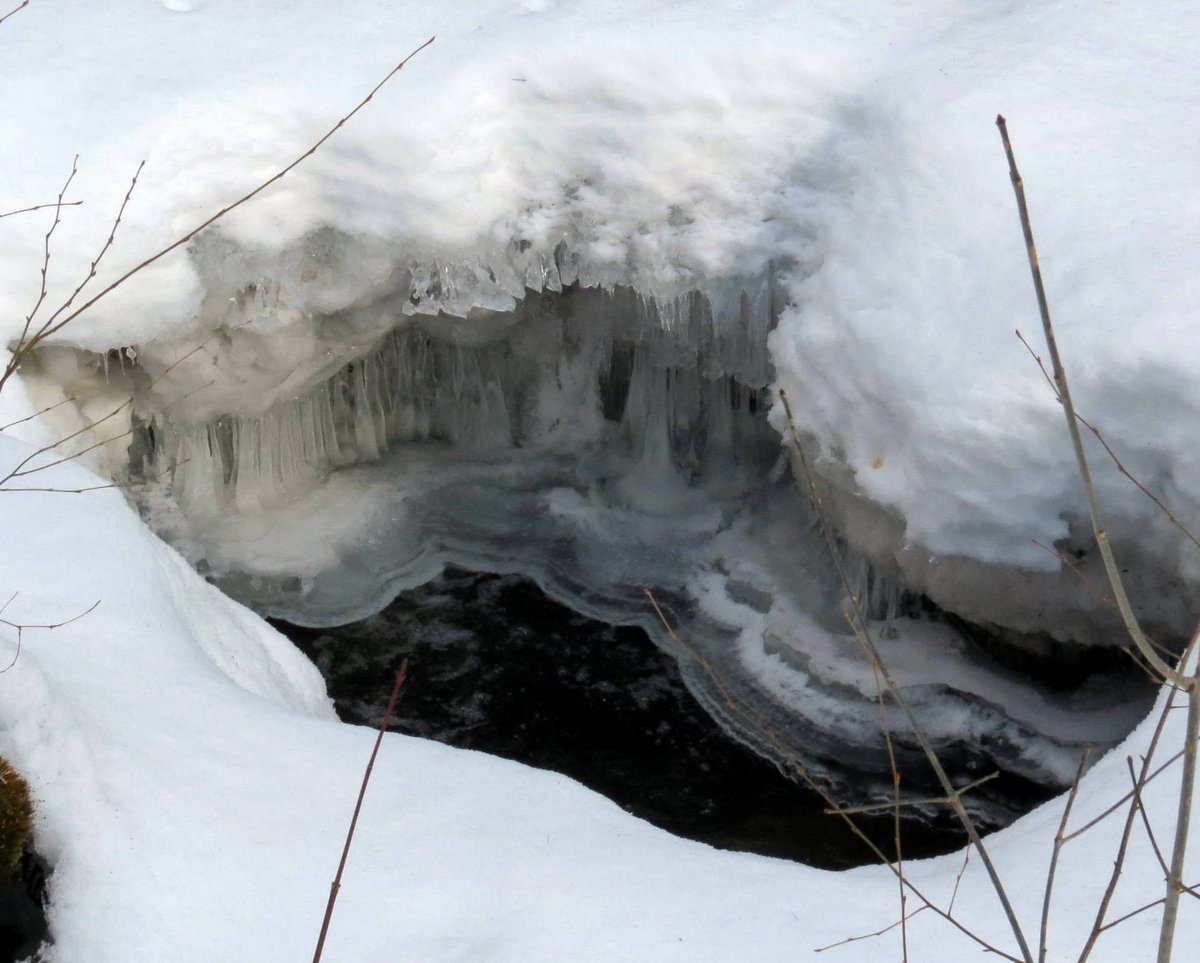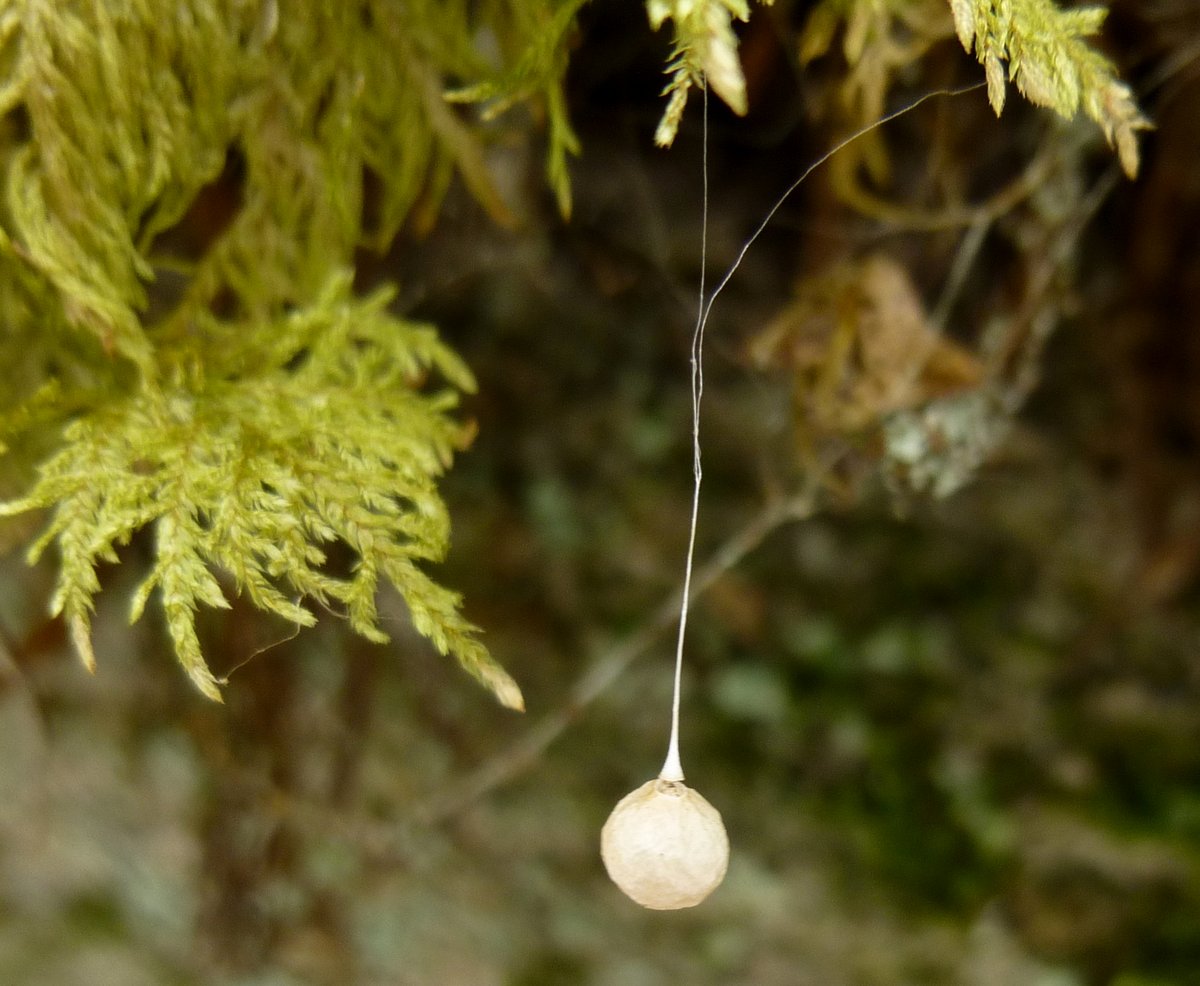Last Sunday I decided to visit Beaver Brook in Keene. It’s been so long since I’ve been there I didn’t remember when the last time was, so I thought it was time. There is a lot here to see and I wanted to check on a few things.
One of the things I wanted to see was the plantain leaved sedge (Carex plantaginea). This is the only place I’ve ever seen it. Not only does it seem happy here but there are 5 or 6 new plants near it. The leaves on this plant are about 3/4 of an inch wide I’d guess, and they look like crepe paper. It will bloom in late April / early May when the purple trilliums bloom.
I also wanted to see the hobblebushes (Viburnum lantanoides) that grow here. They are one of our most beautiful native viburnums when they bloom with hand size white flower heads in May. Luckily our woods are full of them. This photo shows the flower bud in the center and a new leaf on each side. Their buds are naked, meaning they have no bud scales to protect them, so they have wooly hair instead.
I was a little surprised that Beaver Brook wasn’t frozen over. It has been cold for the past couple of weeks, especially at night. There was still plenty of ice to see though.
Here was some foam that turned to ice, shaped like turkey tail fungi. This is the same kind of foam that forms ice pancakes in the river.
I liked the lacy patterns in this bit of ice. Ice comes in so many shapes and even in different colors, and it can be beautiful.
Here, ice baubles hung off a stone. When it’s cold like this ice will form on any surface that gets wet and with all the splashing going on here there are lots of wet surfaces.
Here were more ice baubles. Some can get quite long but I’d guess these were 5 or 6 inches.
The seep that is here wasn’t frozen but that didn’t surprise me. Hydrologically speaking a seep is a wet place where water reaches the surface from an underground aquifer, and this one stays just like this winter and summer. It rarely freezes solid and it never dries out.
There are many trees around the seep and all had script lichens (Graphis) on them. Once you get to know a place and know the trees you begin to better understand the things that grow on them. By coming here and watching I’ve learned that the script lichens that grow here only show their apothecia (the dark squiggles) in the cold months. In the summer all you see are whitish growths on the bark. It really is amazing to me that all of this can disappear and reappear each year. Especially because when you look at them closely they look like scars or knife cuts in the body of the lichen. There are at least two different types here, and maybe three. They’re beautiful forms.
I think the greater whipwort liverworts (Bazzania trilobata) were frozen solid. Each one of these tiny worm like beings is about half the diameter of a pencil. A close look shows that they look almost if they had been braided. Each leaf on this leafy liverwort is only about an eighth of an inch wide and has three triangular notches at its base. This is where the trilobata part of the scientific name comes from. It means “having three lobes.” It’s very easy to mistake this common liverwort for moss so you have to look closely. I almost always find them on stone.
When young the female spore capsule (Sporangium) of juniper haircap moss is covered by a cap called a calyptra which protects it. it is very hairy and this is what gives this moss part of its common name. Eventually as the capsule ages it moves from vertical to a more horizontal position and the calyptra falls off but something must have gone wrong here because out of hundreds of capsules this is the only one I saw with the calyptra still in place. When everything goes well the spore capsule continues to ripen after the calyptra comes off and when the time is right the beaked end cap or lid called the operculum will fall off and release the spores to the wind.
I had to stop and check on the stairstep moss (Hylocomium splendens). It is also called glittering wood moss and it’s easy to see why. It’s a beautiful moss that grows on stones as far north as the arctic tundra. It seems fairly rare here; this is the only example that I’ve seen, and it doesn’t seem to be spreading. The name stair step moss comes from the way the new growth “steps up” off the midrib of the previous year’s branch. Each year a new branch grows from the old and this growth habit allows stair step moss to grow up and over other mosses. It is said that you can tell the age of the moss by counting these steps.
The brook, on the right, was in deep shade most of the way. That made getting shots of ice a challenge.
But the ice on the ledges was at least partially sun lit.
An evergreen fern was on ice, waiting patiently for spring.
One of the best examples of a frost crack that I know of can be found here on a golden birch. Frost cracks happen when the sun warms the tree and its cells just under the bark expand. If nighttime temperatures are cold enough the bark will cool and contract rapidly, quicker than the wood underneath, and this stress on the bark can cause it to crack. It’s fairly common to hear trees cracking with a sound like a rifle shot on cold nights.
A fallen golden birch dripped icy fingers.
Everything within 10 feet of the brook was covered in ice.
And it still has a month or so to grow even more.
I told myself all the way up here that I wouldn’t do it but then I met a man and woman who told me how beautiful Beaver Brook falls was, so I knew I had to see it. It’s quite a climb down here but I had micro spikes on so I wasn’t worried about slipping. You do have to worry about falling though because the path down is very steep and momentum will get you moving fast if you aren’t careful. Luckily there are trees to hang on to so I made it down without incident. Once there I found a very icy waterfall.
The sun just happened to be falling right on the falls, which helped with photos. It can be quite dark down in this natural canyon.
I remembered the year the falls was sheathed in ice, which almost completely deadened the sound. It was a bit eerie. Not today though; they fell with a roar and were a beautiful thing to behold. There was also a strong breeze coming up the brook toward the falls, so it was a bit chilly here.
Looking up from the brook I thought this might have to be the last time I climb down here. My trick knee seems to get a little trickier each time I do it.
But for now I didn’t want to think of such things because the sun was shining and there was beauty everywhere; even in a piece of icicle someone had dropped.
In the winter, the world gets sharp. Beautiful things happen. ~Peter Fiore
Thanks for stopping in.
























































































































